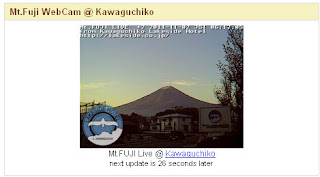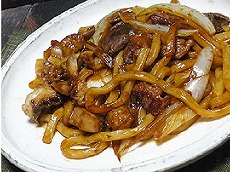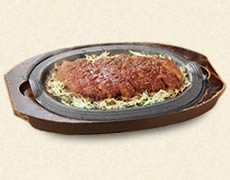 In Japan, like pretty much everywhere else around the globe, people love their coffee. In the big city, in the small village, at train stations and in department stores, coffee shops are all over the place in Japan. There are slick new ones, chain shops, express coffee lanes, coffee and dessert places, foreign-inspired shops, and specialty establishments like the Robot Station Café pictured here.
In Japan, like pretty much everywhere else around the globe, people love their coffee. In the big city, in the small village, at train stations and in department stores, coffee shops are all over the place in Japan. There are slick new ones, chain shops, express coffee lanes, coffee and dessert places, foreign-inspired shops, and specialty establishments like the Robot Station Café pictured here. My fav orite is probably the neighborhood coffee shop, where the space is intimate, the décor is charming and the signs are handmade.
orite is probably the neighborhood coffee shop, where the space is intimate, the décor is charming and the signs are handmade.
It’s the personal touch, a one of a kind vibe they have that makes me feel special and appreciated. I might know the place well, or I might be stopping by for the first time. I love how they greet me as if they know me and have been waiting for me to come in, drop my shopping bag, a nd take a moment to just relax in their coffee-infused oasis.
nd take a moment to just relax in their coffee-infused oasis.
I will always remember this experience. Once I walked into an Osaka coffee shop on a busy street corner, and was surprised to see what looked like a coffee bar. About ten mini personal sized decanters were lined up in a row, each with a ceramic cone filter positioned over it, a coffee filter inside that, and freshly ground coffee inside that. The barrista wore a white apron as if he was a chef. I took a seat and watched him slowly pour steaming hot water from a kettle into each filter. When the decanter was full, he poured the fresh brew into a coffee cup and served a customer. The smell of coffee filled the room. It was heavenly. That afternoon I sipped the best cup of coffee I may have ever tasted in my life! And the caffeine buzz! I recall seeing stars and patterns while being amped up on that coffee…
Life in the big city usually means going for a quick cup of coffee. Starbucks, Tully’s, Doutor, Caffé Veloce, and others exist to make your visit (and your coffee) quick and efficient. The “slow coffee” shops I didn’t have time to look for. I think they are usually tucked away down a side street or easily passed over because they are usually not flashy places. But they are around! I have never tried it but during my next visit to Japan will ask the locals where such a coffee place can be found. I am sure someone will be glad to let me know.
the big city usually means going for a quick cup of coffee. Starbucks, Tully’s, Doutor, Caffé Veloce, and others exist to make your visit (and your coffee) quick and efficient. The “slow coffee” shops I didn’t have time to look for. I think they are usually tucked away down a side street or easily passed over because they are usually not flashy places. But they are around! I have never tried it but during my next visit to Japan will ask the locals where such a coffee place can be found. I am sure someone will be glad to let me know.
Those filt ers they used in the neighborhood coffee shops in Japan were always curious to me. A few months ago I decided to would be fun to recreate that super fresh just-brewed coffee experience – even though I have two electric coffee makers. The coffee made by my machines taste great, due to the good organic coffee I buy, but there is still something unique and different about coffee that is freshly brewed by hand, not brewed by a machine. So I searched on the internet for some photos, and found a few. Some filters (or drippers as they call them) are glass, others are ceramic none are plastic...).
ers they used in the neighborhood coffee shops in Japan were always curious to me. A few months ago I decided to would be fun to recreate that super fresh just-brewed coffee experience – even though I have two electric coffee makers. The coffee made by my machines taste great, due to the good organic coffee I buy, but there is still something unique and different about coffee that is freshly brewed by hand, not brewed by a machine. So I searched on the internet for some photos, and found a few. Some filters (or drippers as they call them) are glass, others are ceramic none are plastic...).
I discovered an item called the Hario V60 Dripper. Sounded good! Maybe it was old school, but with a high te ch, modern design. (It looks like NASA designed it) Even with all the fancy electric coffee makers out there, this manual coffee maker is selling well today. That's interesting. Reviewers on Amazon.com rave about it. I almost ordered one on Amazon but elected instead to place an online order from Intelligensia Coffee in Chicago. (I ordered some of their whole bean coffee at the same time). The Hario white ceramic filter cost US$ 23.00.
ch, modern design. (It looks like NASA designed it) Even with all the fancy electric coffee makers out there, this manual coffee maker is selling well today. That's interesting. Reviewers on Amazon.com rave about it. I almost ordered one on Amazon but elected instead to place an online order from Intelligensia Coffee in Chicago. (I ordered some of their whole bean coffee at the same time). The Hario white ceramic filter cost US$ 23.00.
My Hario arrived in the mail a few days later. I was so surprised. I hadn’t seen the box before. Made in Japan! Not only that, my Hario came directly from Japan.
Japanese is written all over the box, and my filter even has a Japanese bar code on it! The genuine article!
Exactly what I needed to have my own Japanese neighborhood coffee moment at home. It works beautifully. So now anytime I want to, I use this to make myself some amplified super coffee.
Seems there is much Japanese engineering that goes into the design of this filter. Now if I could only learn to make the cool designs with frothy milk…



























